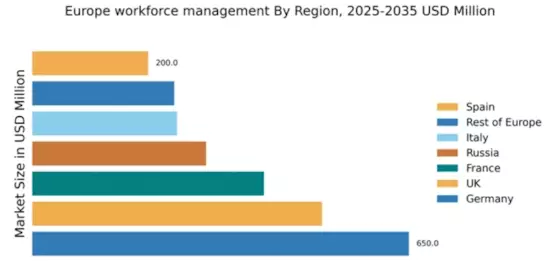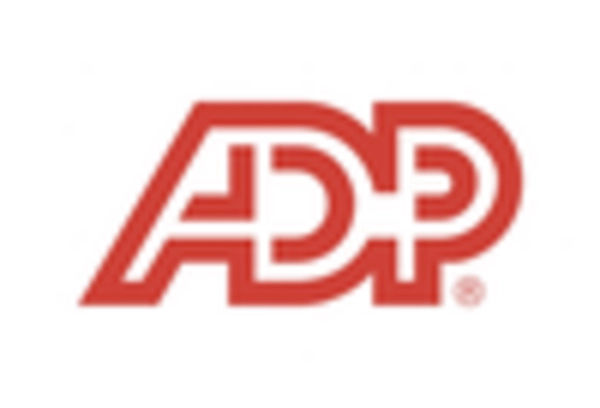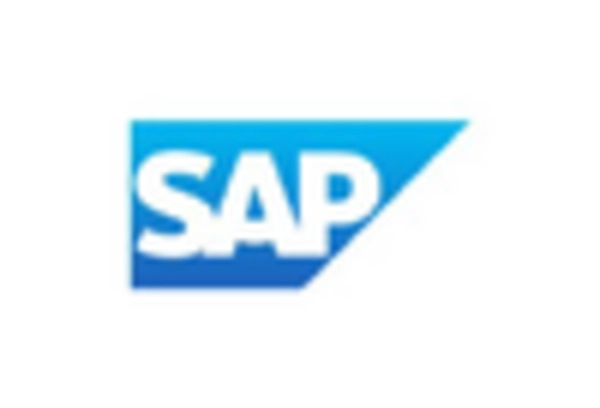Regulatory Compliance and Labor Laws
The evolving landscape of labor laws and regulations in Europe significantly impacts the workforce management market. Organizations must navigate complex compliance requirements, which vary across countries. This necessitates the implementation of robust workforce management solutions to ensure adherence to regulations such as the General Data Protection Regulation (GDPR) and various labor standards. Non-compliance can result in substantial fines, prompting businesses to invest in systems that facilitate compliance tracking and reporting. As a result, the demand for workforce management solutions that incorporate compliance features is likely to increase, thereby influencing market dynamics in Europe.
Shift Towards Remote and Hybrid Work Environments
The shift towards remote and hybrid work environments is reshaping the workforce management market in Europe. Organizations are increasingly adopting flexible work arrangements, necessitating the need for effective management solutions that can accommodate diverse work settings. This transition requires tools that facilitate communication, collaboration, and performance tracking for remote employees. As a result, the demand for cloud-based workforce management solutions is on the rise, allowing organizations to manage their workforce efficiently regardless of location. This trend is likely to continue influencing the workforce management market as companies adapt to the evolving nature of work.
Focus on Cost Efficiency and Resource Optimization
In the current economic climate, organizations in Europe are increasingly prioritizing cost efficiency and resource optimization. The workforce management market is responding to this trend by offering solutions that help businesses minimize operational costs while maximizing productivity. By leveraging workforce management tools, companies can analyze labor costs, forecast demand, and optimize staff allocation. This focus on efficiency is particularly relevant in sectors such as retail and manufacturing, where labor costs constitute a significant portion of overall expenses. As organizations seek to enhance their bottom line, the workforce management market is expected to witness sustained growth driven by these cost-saving initiatives.
Technological Advancements in Workforce Management
The workforce management market in Europe is experiencing a surge in technological advancements, particularly in automation and data analytics. These innovations enable organizations to optimize scheduling, improve productivity, and enhance decision-making processes. For instance, the integration of advanced software solutions allows for real-time monitoring of employee performance and resource allocation. According to recent data, the European workforce management software market is projected to grow at a CAGR of 10.5% from 2025 to 2030. This growth is indicative of the increasing reliance on technology to streamline operations and reduce labor costs, thereby driving the workforce management market in Europe.
Emphasis on Employee Well-being and Retention Strategies
The workforce management market in Europe is witnessing a growing emphasis on employee well-being and retention strategies. Organizations are recognizing the importance of fostering a positive work environment to enhance employee satisfaction and reduce turnover rates. This shift is prompting businesses to invest in workforce management solutions that support employee engagement initiatives, such as performance feedback systems and wellness programs. Data suggests that companies focusing on employee well-being experience a 25% increase in productivity. Consequently, the workforce management market is likely to expand as organizations seek to implement strategies that prioritize employee health and retention.


















Leave a Comment